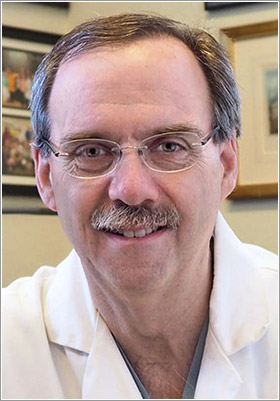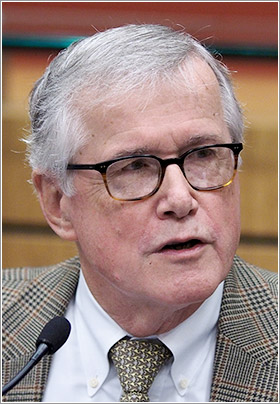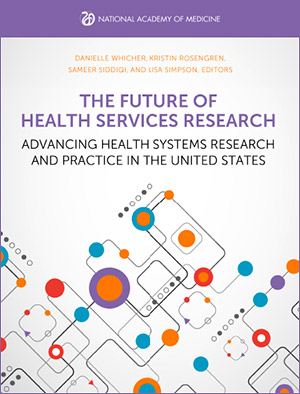News
HSR ‘State of the Union’ Report Highlights Funding and National Coordination Issues
Penn Participants Discuss the 'Very Imposing Challenges' for Scientists Who Study Health Care Delivery
In a State of the Union-like address about health services research (HSR) in the United States, a report issued by an elite team of experts assembled by the National Academy of Medicine (NAM) focuses on the scientific discipline’s lack of strategic funding and national coordination.
Citing “unprecedented opportunity accompanied by very imposing challenges,” the just-published report is a 101-page assessment of both the current deficiencies of health care delivery as well as the financial and logistical obstacles that often limit HSR researchers’ efforts to identify solutions for those problems. The title is The Future of Health Services Research: Advancing Health Systems Research and Practice in the United States.
Invitation-only
The official print version is the formal report of an invitation-only NAM Medical Symposium convened in Washington earlier this year. That gathering brought together experts from 13 universities with leading HSR departments, major health systems, AcademyHealth, insurance companies, the Association of Medical Colleges, AMA, AARP, AHRQ, PCORI, CMS, the AMA, the VA, and RWJF. All were focused on the overall state of the HSR field and the changes required to make the work of its investigators more effective at a time when health care delivery is undergoing unprecedented levels of disruption and change.

A major concern is that during a good part of HSR’s modern era, the Agency for Healthcare Research and Quality (AHRQ) within the Department of Health & Human Services served as the discipline’s national nexus. But now, robust stand-alone centers of HSR have emerged across a broad spectrum of federal and state agencies, as well as throughout both the health insurance industry and health systems themselves. One result of this, in terms of funding and strategic coordination, is there is no real HSR “center” any longer, said NAM Symposium planning committee member Lee Fleisher, MD.
‘Line-of-sight funding’
“The symposium and report are a lot about where HSR should live and how it should be funded going forward,” said Fleisher, a Professor and Chair of Anesthesiology at the University of Pennsylvania’s Perelman School of Medicine and LDI Senior Fellow. “There’s great concern because the size of the HSR community has grown so large at the same time the clarity of line-of-sight funding has become less clear.”
The official report explains that decision makers, including clinicians, health care executives, government regulators, policymakers, insurers and patients “need to know what problems are in play and what works best, for whom, and under what circumstances. In the past this has underscored the importance of health services research. Yet, ironically, at a time when the need is becoming more complex and more acute, when our realization of the importance of linking what happens inside clinic doors with what happens outside them, the support for health services research is softening.”
“Given the widening gap between what should be possible and what is achieved in health and health care,” the report continues, “strengthening the pillars of the nation’s capacity to assess and improve health system performance is essential.”
‘Unacceptable disparities’
Noting that U.S. health care costs remain the world’s highest, the report points out that “despite the magnitude of national spending, unacceptable disparities still exist in the health experiences of different population groups, and, for certain groups, those disparities are increasing to the point that life spans are actually decreasing.”

Nationally renowned Wharton School health economist and LDI Senior Fellow Mark Pauly, PhD, who was also a participant in the symposium, said “I think the eight ball HSR has been behind for most of its history is that for many skeptics in Congress, its research doesn’t seem as directly connected with saving lives as biomedical research.”
“But HSR is directed as a severe problem in the health care system in terms of health outcomes which some of my own work with HSR colleagues here at Penn has addressed,” Pauly continued. “One example is if different health systems have different ways of handling chronically ill patients who are being discharged from a hospital stay, identifying a consistently better way to do that could save a lot of money, save a lot of hospital readmissions, and ultimately save a lot of lives — at the same time it improves patients’ quality of life. That’s what HSR does.”
‘Not telling story’
“What HSR doesn’t do so well,” Pauly said, “is tell its own story about how it is a public good that improves health care.”
Pauly notes that health services research is one of the least visible health care-related sciences. This, even though 15,000 of its researchers study the daily minutiae of how health care is delivered throughout the country’s hospitals, clinics, medical practices and nursing homes is organized, financed, managed and quality controlled.
The discipline emerged as an academic pursuit in the 1960s as Congress launched Medicare, one of history’s largest and most complex publicly-funded health insurance systems. At that same time, the federal government extended broad new kinds of funding support for health care facilities that helped drive the evolution of that business into the industrial colossus it is today.
Health services research is a field that often investigates the ways the U.S. health care delivery system fails to provide the most effective possible treatments at the lowest possible costs to the broadest possible population of U.S. residents.
NAM report authors
Although its practitioners tend to avoid describing it in this way, health services research is a field that often investigates the ways the U.S. health care delivery system fails to provide the most effective possible treatments at the lowest possible costs to the broadest possible population of U.S. residents. One reason it has faced such a gauntlet of political and funding obstacles since it emerged as a modern discipline in the 1960s is that such research inevitably clashes with the status quo revenue strategies of many corporations, financial institutions and medical professionals who enjoy Congressional level clout.
Important findings
Typically low-key, HSR scientists quietly conduct and publish research, the implications of which are often not fully conveyed to the general public. For instance, one landmark HSR study in 2003 documented that only 55% of patient encounters with physicians resulted in the actual “receipt of recommended care” for the patient’s condition. Another typical study documented that children covered by Medicaid/CHIP have dramatically longer appointment wait times (40 days) than children with private insurance. A third example investigated emergency departments, detailing how some ER physicians were inappropriately prescribing opioids for as many as 40% of their ankle sprain patients, often in quantities known to increase the probability of addiction.
Behind the scenes, these sorts of study results can significantly alter the environment of facts and knowledge that influence how policymakers, regulators, clinicians and health care administrators make their decisions.
One vision that punctuates the entire NAM report is that in order to dramatically increase the accuracy, speed, and scope of scientific discoveries related to health care delivery, researchers must have access to much larger quantities of data resources that are currently unavailable. What it recommends is seemingly nothing short of a sweeping revolution in national data policy and architecture.
Insufficient data quality
“Currently,” the report authors write, “cultural and political barriers, regulations, a lack of follow-through on public commitments to share data, legal challenges, and the growth of proprietary data, prohibit the sharing of data to improve health and health care. Moreover, the quality of most electronic health record and claims data is insufficient for supporting health services research… Policy levers for improving the data infrastructure and data sharing include developing data standards, uniform data systems across primary care settings, implementing policies to prevent data blocking, and encouraging truly interoperable systems.”
Currently, cultural and political barriers, regulations, a lack of follow-through on public commitments to share data, legal challenges, and the growth of proprietary data, prohibit the sharing of data to improve health and health care.
NAM report authors
Traditionally, the holy grail in the minds of many HSR leaders has been a national U.S. system of interoperable electronic health records systems similar to those now found in countries like Sweden or Taiwan.
“The impediments to doing that,” said Pauly, whose 50 years of research have been heavily dependent on access to health care records, “are privacy lawyers and both businesses and individual consumers who have come to understand the value of health care data and want to be paid for it, or don’t want to share it for reasons rooted in market competition.”
“As a researcher I always want access to as much data as possible,” Pauly said, “but I also wonder if an unequivocal allegiance to the goal of interoperability is really the best strategy for our field. There may be a need to create an intellectual property process and a way for people to gain the benefits of making their data available to others as well as enjoying the benefits of getting other peoples’ data for themselves. Maybe the answer is some kind of trading system. Health care data should be a public good but, like a lot of public goods, that can be kind of hard to achieve in the real world.”
Implementation science
Two other visions that drew a lot of attention at the NAM gathering were the need for boosting the perceived importance of implementation science and a push for the establishment of HSR units within the live clinical environment of more health systems.
Implementation science — the study of how to get hospitals and clinicians to actually use the evidence-based discoveries developed by researchers — has been a back-burner concern until recently. The NAM report cites the lack of influence HSR scientists have generally had “in informing more nuanced management and implementation decisions that health systems face.” It emphasized the need “for efforts to focus on translation, communication, and implementation of results.”
Growing numbers see implementation science as a way of validating the need for continued funding of HSR studies and I think that’s why you’re seeing implementation science take on new prominence as the translational arm of HSR.
Lee Fleisher
“The question symposium participants were asking,” explained Penn’s Fleisher, “is ‘how do we move from data and analysis to changing care delivery?’ Growing numbers see implementation science as a way of validating the need for continued funding of HSR studies and I think that’s why you’re seeing implementation science take on new prominence as the translational arm of HSR.”
Rapid cycle research
Similarly, the consensus of the NAM symposium was that clinical practices and procedures need to become the focus of more HSR work. They called for “developing capacity for health services research skills, techniques, and methods among operationally-focused teams within large health systems” and “rapid cycle research projects that aim to inform policy makers and health systems leaders about issues they face as soon as is practical… While there is value in conducting large multiyear research projects, timeliness matters.”
Ironically for Fleisher and Pauly at the symposium, Penn is far along on pioneering in-clinic HSR research units with its six-year-old Penn Medicine Center for Health Care Innovation and three-year-old Penn Medicine “Nudge” Unit. It also developed an Implementation Science Working Group at the Leonard Davis Institute of Health Economics (LDI) six years ago that has recently expanded into the Penn Center for Implementation Science.
“If you look at the HSR work being done here at Penn Medicine and LDI and the Center for Health Incentives and Behavioral Economics (CHIBE),” said Fleisher, “it makes you think Penn HSR is unbeatably ahead of the curve. It’s really one of the elite institutions in this field.”
